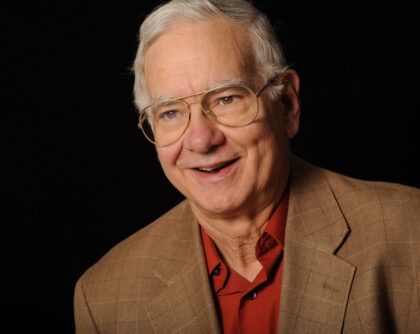David E. Pritchard
Research Interests
Professor David E. Pritchard is a principal investigator in the Atomic, Molecular and Optical Physics Group and works on Basic Atomic Physics in the Research Laboratory of Electronics.
Courtesy of Serious Science | YouTube
Biographical Sketch
Professor Pritchard carried out pioneering experiments on the interaction of atoms with light that led to the creation of the field of atom optics. His demonstration of the diffraction of a beam of atoms by a grating made of light waves opened the way to studies of the diffraction, reflection, and focusing of matter waves, similar to those with light waves. He has applied atom optics to basic studies of quantum theory, to new methods for studying the properties of atoms, and to the creation of devices such as the atom interferometer and atom wave gyroscope.
Professor Pritchard’s investigations in atom-light interactions also led him into the field of laser cooling where he made a number of pioneering contributions, including the work that led to the creation of the magneto-optical trap. This device became the workhorse in atom cooling experiments, including most studies of Bose-Einstein condensation. In 1990, he brought Wolfgang Ketterle to MIT as a postdoctoral researcher to work on atom cooling, and stepped aside from that field to allow Ketterle to be appointed to the faculty in 1992. Ketterle pursued atom cooling to achieve Bose-Einstein condensation in 1995, a discovery for which he was awarded the Nobel Prize in physics in 2001, along with Eric Cornell and Carl Wieman of JILA, Boulder, CO. Professor Pritchard also mentored Eric Cornell, who was his graduate student. Professor Pritchard is currently collaborating with Ketterle to merge Bose-Einstein condensation with atom optics, using the atom laser as a source of coherent atoms for basic studies in quantum physics, new types of atom interferometry, and possibly to applications in nanotechnology and quantum computing.
Professor Pritchard is also a dedicated teacher. During the past few years he has developed a computer-based tutorial for elementary mechanics called Cybertutor, which has been used successfully in versions of 8.01: Physics I.
Professor Pritchard received his B.S. from California Institute of Technology and his Ph.D. from Harvard, working with Professor Daniel Kleppner, who soon thereafter came to MIT, bringing Pritchard with him as a postdoctoral fellow. Pritchard joined the faculty of the Department of Physics in 1970. He has many honors, including the Broida Prize of the American Physical Society. He is a member of the National Academy of Sciences and is a Fellow of the American Academy of Arts and Sciences.

Schools of Science and Engineering join hands to transform learning
In 8.02 (Electricity and Magnetism), students explore the practical application of electromagnetic concepts.
Awards & Honors
- 2004 // Selby Lecturer of the University of Western Australia
- 2004 // Max Born Award (OSA) "For creative application of light to new forms of spectroscopy, to manipulation and trapping of atoms, and for pioneering the new fields of atom optics and atom interferometry."
- 2003 // Dean’s Educational and Student Advising Award, MIT School of Science
- 2003 // Arthur L. Schawlow Prize in Laser Science (APS) "For groundbreaking studies of coherent atom optics and pioneering work on laser cooling and trapping of atomic gases."
- 2001 // Cecil and Ida Green Professor of Physics
- 1999 // National Academy of Sciences Member
- 1991 // Herbert P. Broida Award "For outstanding contributions to atomic, molecular and optical physics including his monumental studies of energy transfer in molecular collisions; seminal research on atom wave interferometry and atom optics; numerous studies of the forces of light on atoms and their application to atom cooling and trapping; and his development of single ion mass spectroscopy."
Key Publications
-
D. Pritchard, TechEd99, ed. A. Ellis (1999). Preliminary report on NSF Workshop on Improving Undergraduate Education in Math and Physical Sciences using Technology, NSF.
-
D. Pritchard and N. Schmidt (1999). “Cybertutor: An Online Socratic Tutor.” Insider – MIT Academic Computing 10(2): 6-7.
-
“Atom Cooling, Trapping, and Quantum Manipulation,” C. E. Wieman, D. J. Wineland, and D. E. Pritchard, Rev. Mod. Phys. Centennial Issue, S253-S252.
